Winter in New England can seem never-ending. March can be a long month, leaving most New Englanders itching for spring. As the buds on the trees come to life and the flowers start to bloom, many people are coming out of hibernation and looking for things to do. I have pulled together a list of 20 things to do this spring in New England.
This post may contain affiliate links, and I may earn compensation when you click on the links at no additional cost to you.
Boston’s Public Garden and the Swan Boats.

The Boston Public Garden was the first botanical garden in America. It contains 80 species of plants and is home to beautiful swan boats. Since the 1800s, the swan boats have sailed around the park’s lagoon and become a symbol of the city of Boston. Robert Paget invented this style of boat, and four generations later, the Paget family still owns and operates the Swan boats.
The boats open for the season on May 8th and will remain open through Labor Day. The cost is $4.50, an adult, $3.00 for children 2-15, and under two are free. It is one of my favorite things to do in the city.
Attend a Baseball Game or Tour Fenway Park

If you are a baseball fan, one can not come to Boston without visiting the oldest and most beloved ballpark in America. Pick up tickets to a game and experience firsthand why Red Sox Nation loves this ballpark and their Sox. Sox not in town while you are here? No fear, take an hour-long tour of the park. Feel the presence of Ted Williams, Yaz, Carlton Fisk, Jim Rice, Pedro Martinez, Jason Varitek, and Big Papi. Sit on top of the famous Green Monster. Tours are available year-round and depart every hour.
Boston Duck Tours

One of the best sighting seeing tours in Boston is the Duck Tours. It is a fully narrated historic tour of Boston that is seen by both land and sea! Well, the Charles River, but you get the point. These boats are a W.W.II style amphibious landing vehicle that travels on land and water. A conDUCKtor will be narrating your tour as you drive through the streets of the city, hitting many of its famous marks. Kids even get to drive the boat!
Attend one of New England’s Many Flower Festivals

Many festivals have been canceled, postponed, or are being held virtually for 2021. Please check with the event organizers before planning your trip.
A couple of years ago, we spent Mother’s Day at the Wicked Tulips Farm in Rhode Island. We explored the beautiful gardens and picked our own tulips. In doing my research, I have discovered New England has several flower festivals through the spring. According to Trip Savvy, these are the best Springtime Flower festivals in New England.
Daffodil Days at Blithewold
Blithewold Mansion is located in Bristol, Rhode Island, and its Gateway Event to Spring takes place every April. Fifty thousand daffodils are growing on 33 acres of gardens and woodland paths. In addition to the daffodils, in early May, flowering cherry trees, primroses, and star magnolias show their stuff, and by late May, the grounds come alive with columbine, forget-me-nots, and lupine.
Nantucket Daffodil Festival
Hop on board a ferry and head over to Nantucket, Massachusetts, for the annual Daffodil Festival.
Due to the pandemic, this year’s festival will be held virtually. It is quite the show with more than three million daffodils, complete with a seaside view and an iconic lighthouse.
Meriden Daffodil Festival
The Meriden Daffodil Festival is held in Meriden, Connecticut, each year at the end of April. It is called Connecticut’s most colorful April event. Usually, there are carnival rides, a food tent, games, and more.
However, due to the pandemic, this year’s festival is canceled. However,
Hubbard Park is still open to the public to drive through and enjoy the beautiful flowers.
Lilac Sunday
At Arnold Arboretum in Boston, Massachusetts, the grounds are home to 408 lilac plants representing 179 different varieties. For this reason, Lilac Sunday is one of North America’s most significant lilac-focused events. Embark on a self-guided tour after printing a tour brochure, and bring a picnic lunch to enjoy. The lilacs are in bloom for approximately four weeks, starting in late April to mid-May.
Maple Sugar Festival

On the last week of March, head on up to Maine and visit one of the 100 sugar shack participants in this annual event. See how maple syrup is made, sample some tasty treats, and bring home some of the country’s best maple syrup. You can find more information here.
Covered Bridge Tour
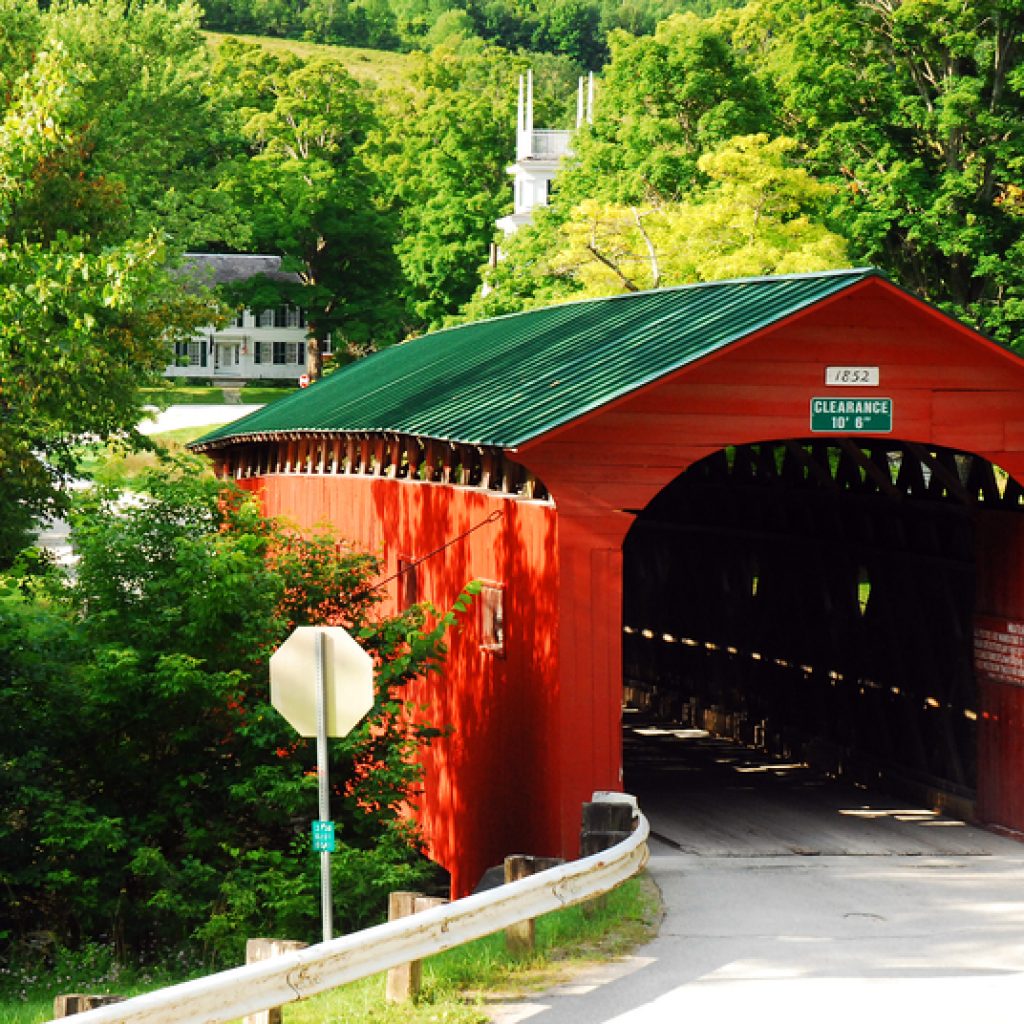
Jump in the car and head on up to either New Hampshire or Vermont and hunt for covered bridges. You can easily find a map online that lists all of the cover bridges. Why not make a weekend of it and spend the time exploring some of the most beautiful covered bridges on this side of the Mississippi.
Acadia National Park

Acadia National Park is one of the top 10 national parks in the United States to visit. There are twenty-seven miles of historic motor roads, 158 miles of hiking trails, and 45 miles of carriage roads to drive and hike throughout the park. It has earned its title Crown Jewel of the North Atlantic Coast. The park houses the highest mountains along the Atlantic seacoast.
Coastal Highway U.S. 1 in Maine

Take a drive up the Maine coastline and experience some breathtaking views. Along the way, stop for a lobster roll and steamers. Make sure to visit some of Maine’s iconic lighthouses. The route will take you from the New Hampshire and Maine border all along the coast of Maine, the St. Croix River, and then along the border of the U.S. and Canada. I suggest you take a few days to enjoy this adventure.
Race Point Beach, Provincetown, MA
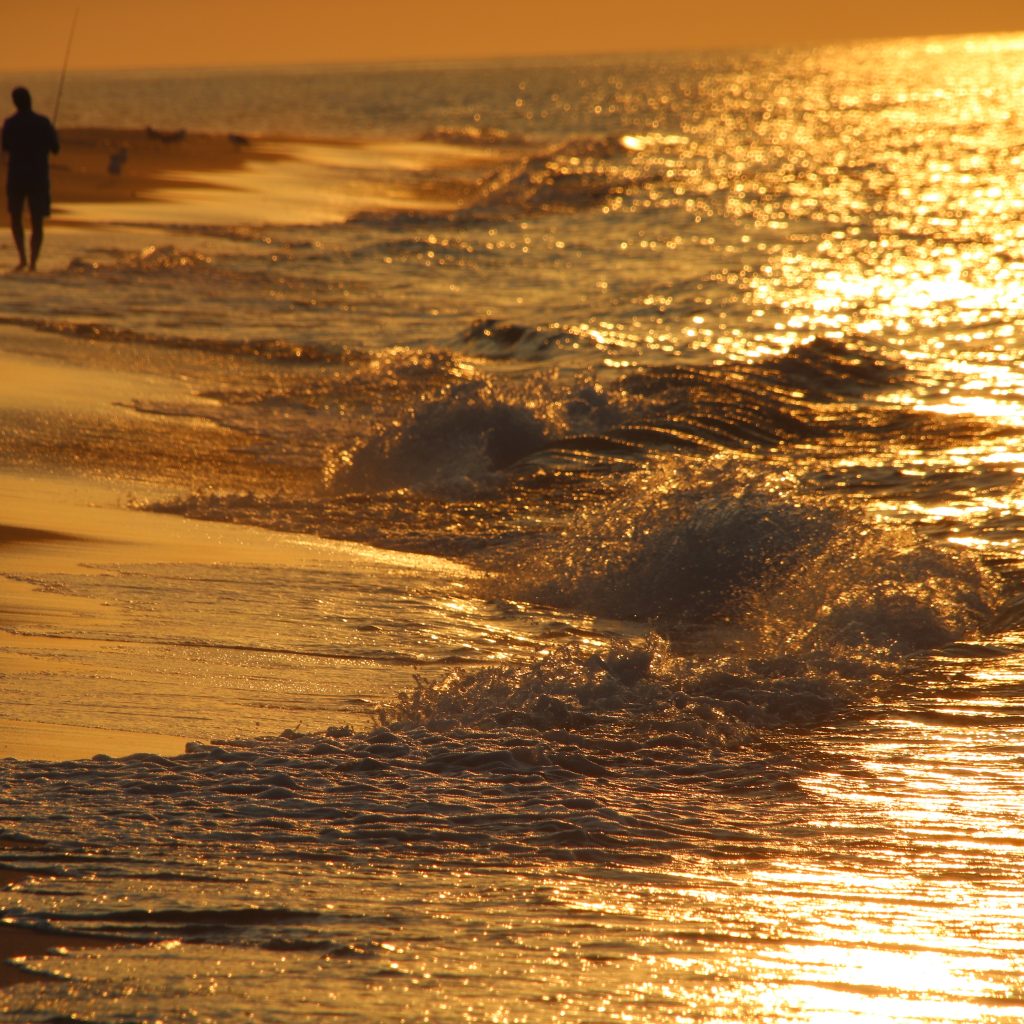
At the tip of the National Seashore is Race Point Beach. This gorgeous beach is a great beach to watch wildlife (seals, dolphins, whales, and perhaps a great white) and see one of the most amazing sunsets.
If you are so inclined, you can walk the three-mile trail to see the Race Point lighthouse or bike the eight-mile Cape Cod Province Lands Bike Trail, which winds through towering dunes.
Baby Animal Day at Billings Farm

Head to Woodstock, Vermont, and attend Baby Animal Day at Billings Farm, an annual tradition to meet the baby animals. Surrounded by the Green Mountains, Woodstock is a great place to visit, from sampling Vermont’s famous cheeses to hiking to strolling the historic downtown.
Boston Food Tour

Boston has some fantastic food tours. One year my best friend and I, along with our husbands, took a Historic Pizza and Taverns Tour. It started in the North End, went to Charlestown, and back to the Faneuil Hall area. It was a lot of fun and yummy. There are so many to choose from. You can find a list of Boston’s best food tours here.
Whale Watching off the Maine coast.

Mid-April is when the humpbacks make their way to Kennebunkport’s waters and other coastal areas of Maine.
Dinosaur State Park, Rocky Hill, Connecticut
Dinosaur State Palk has one of the largest dinosaur track sites in North America. On display in the museum are early Jurassic fossil tracks that were made 200 million years ago. In addition to the exhibit center are two miles of nature trails and the Dinosaur Arboretum. The arboretum contains over 250 species and other living representatives of plant families around during the dinosaur’s age.
Mark Twain House

Designated National Historic Landmark, the Mark Twain House is located in Hartford, Connecticut, and showcases Mark Twain’s life and career. The museum chronicles his life and works, including The Adventures of Huckleberry Finn, The Adventures of Tom Sawyer, and A Connecticut Yankee in King Arthur’s Court, which he wrote while living there.
Mystic Seaport, Connecticut

Mystic Seaport: The Museum of America and the Sea is the most significant maritime museum in the United States. The museum is known for its collection of sailing ships and boats and the re-creation of the crafts and fabric of an entire 19th-century seafaring village. The maritime town consists of more than 60 historic buildings. There is also a fantastic aquarium, and make sure to grab some pizza from Mystic Pizza.
Strawbery Banke Museum, Portsmouth, NH
The Strawbery Banke Museum is an outdoor history museum that brings more than 300 years of American history to life. The museum spans 10 acres in downtown Portsmouth’s waterfront neighborhood and features 32 historic buildings and eight heritage gardens.
The Sandwich Boardwalk, Sandwich, MA
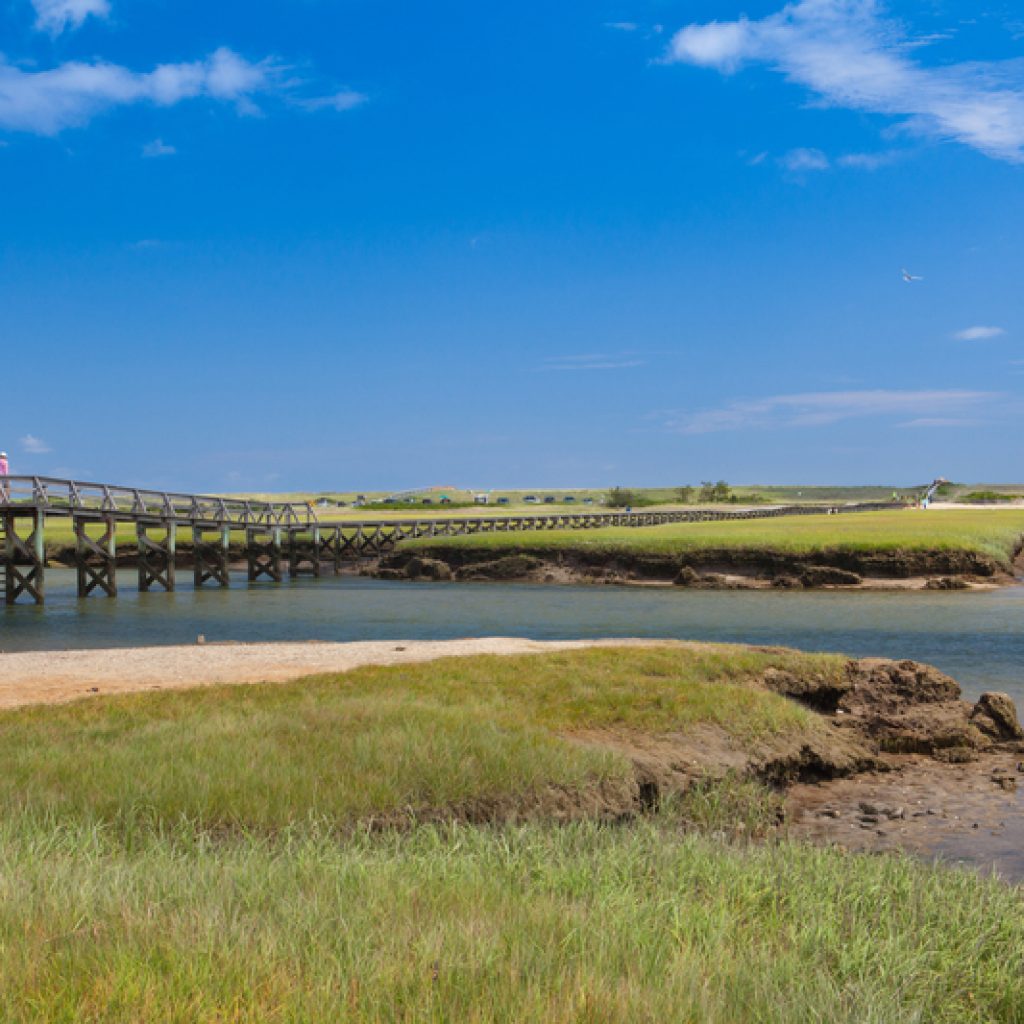
Named one of the top 10 boardwalks by National Geographic, the Sandwich boardwalk spans 1,350 ft over a marsh before it connects to Boardwalk beach. It an excellent place for birdwatching and watching ships enter the Cape Cod Canal.
Cape Cod Canal
The Cape Cod Canal is a man-made canal connecting Cape Cod Bay in the north to Buzzards Bay in the south and is part of the Atlantic Intracoastal Waterway. The canal is used extensively by recreational and commercial vessels. You will access fishing and trails for in-line skaters, bicyclists, and walkers on both sides of the canal. Several parking areas are maintained at access points. The Corps of Engineers lease bourne Scenic Park to the Town of Bourne Recreation Authority for use as a tent and R.V. campground adjacent to the canal.
Castle Island, South Boston, MA

Castle Island is a peninsula on the shores of the Boston Harbor. It a recreation site and home to Fort Independence. Attractions include a playground, beach and swimming access, and Sullivan’s restaurant. You can also take a tour of Fort Independence.
Explore a Massachusetts State Park
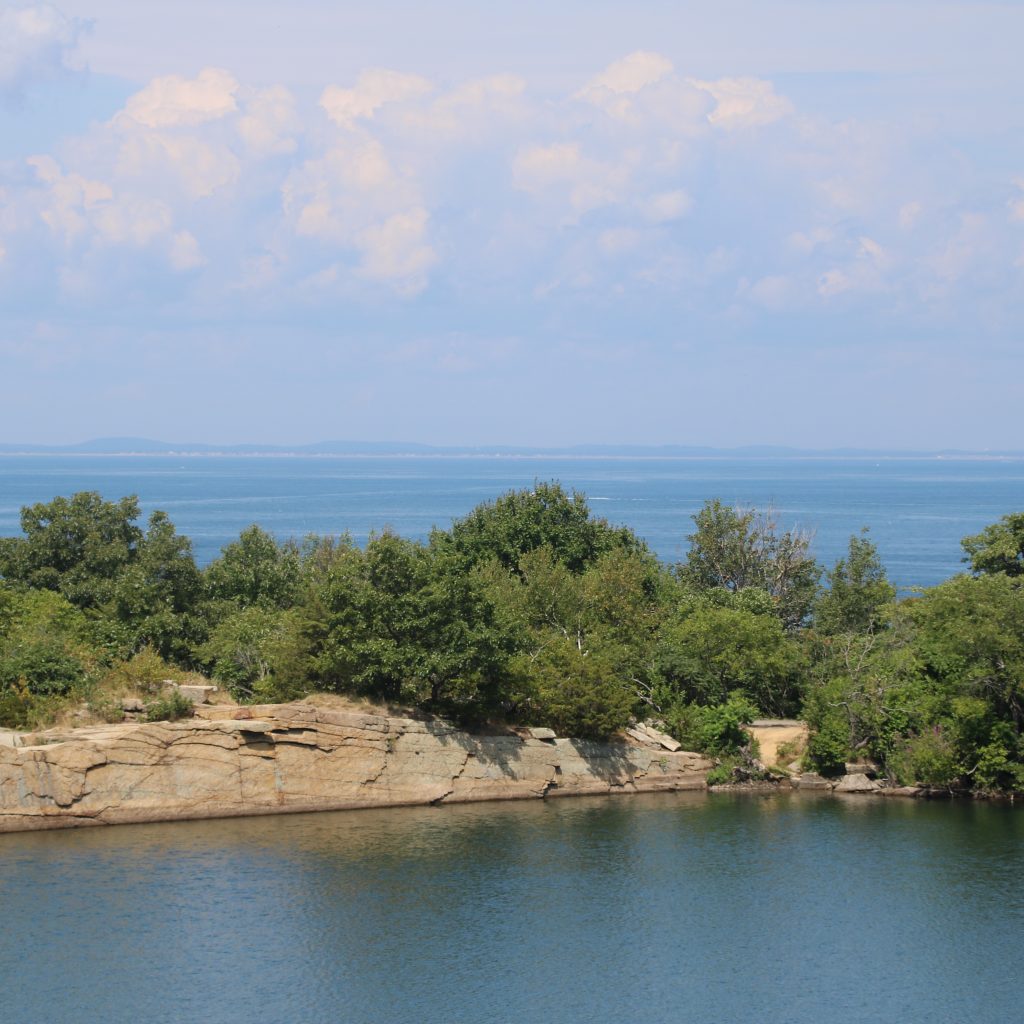
With 151 state parks to choose from, you could spend the entire season exploring the state parks. Some of our favorites include Halibut Point, Natural Bridge, and Bash Bish Falls.
So there you have it, 20 things to do this spring in New England. Which one would you do first?
The summer of state parks continues with our visit to Halibut Point State Park. Located on Cape Ann in the town of Rockport, MA, it was once the Babson Farm Granite Quarry. The granite was quarried at the beginning of the 20th century and used to build thousands of buildings, warehouses, bridges, street monuments, and tunnels. Unfortunately, in 1929, operations ended with the collapse of the Cape Ann granite industry. In 1934, The Trustees of the Reservations acquired a piece of land next to the quarry. Here the Halibut Point Reservation was created. Then, in 1981, the state purchased 56 acres of land, resulting in Halibut State Park’s creation. Together, they make up this beautiful area.
Before heading out, be sure to download a trail map. You can find in here.
As I may have mentioned in my previous post, we were in the midst of a heatwave here in Massachusetts. We have had many days of 90 degrees and 100% humidity. On this particular day, we thought we might get some relief by being next to the ocean. Not so much!

Our visit started with a hike around the granite quarry. The walk is a self-guided tour. We downloaded a brochure that explains each of the nine markers set around the quarry.

The quarry is no longer in use and filled with natural spring water. When it was still an active quarry, the workmen would have to keep the water out by hand with buckets. Can you imagine? Today, it is filled with spring water and about 60 feet at its deepest point. There is no swimming in the quarry. It is for your viewing pleasure only.

As you can see from the photo, the blocks of granite are coming up from the water. Some birds are sitting on them. Granite was brought up from the bottom of the quarry using what is called derricks. Derricks are an arrangement of blocks, tackles, and pullies. You can see how it was done below.






The single-round hole is called a dog hole. It’s used to hold tips of the giant hooks called dogs. Cables and chains suspended these from the derricks.

Long iron staples were used to keep the derrick in place. Over thousands of years, water seeping in the granite would cause minerals to oxidize or rust. Hence, this granite got its color.
Marker 5 is a small body of water that sits next to the quarry. I have to admit, we missed it. I took a picture of the marker but not the water. Anyways, it is called an In Motion. That is a term meaning small quarry. It was here that the granite was made into pavers.


Marker 6 demonstrates how granite was split at the quarry. In the early days, it was split by making holes with a flat chisel and then driving flat wedges down into the holes. Later on, the process was much improved. According to the guide, “new chisels with shallow V-shaped cutting edges were struck with a hit-turn-hit-turn motion. This technique made circular holes into which half-round shims like the ones still in this stone were inserted. A tapered wedge was driven between them, splitting the stone. Even with this improved technology, nearly 75% of the large blocks split crookedly and had to be relegated to the grout pile.” Wow, that seems like a lot of wasted granite!

Marker 7 is the grout pile. The grout pile makes up the lookout point of Halibut Point State Park. It is a pile of granite of pieces dumped here over many years.
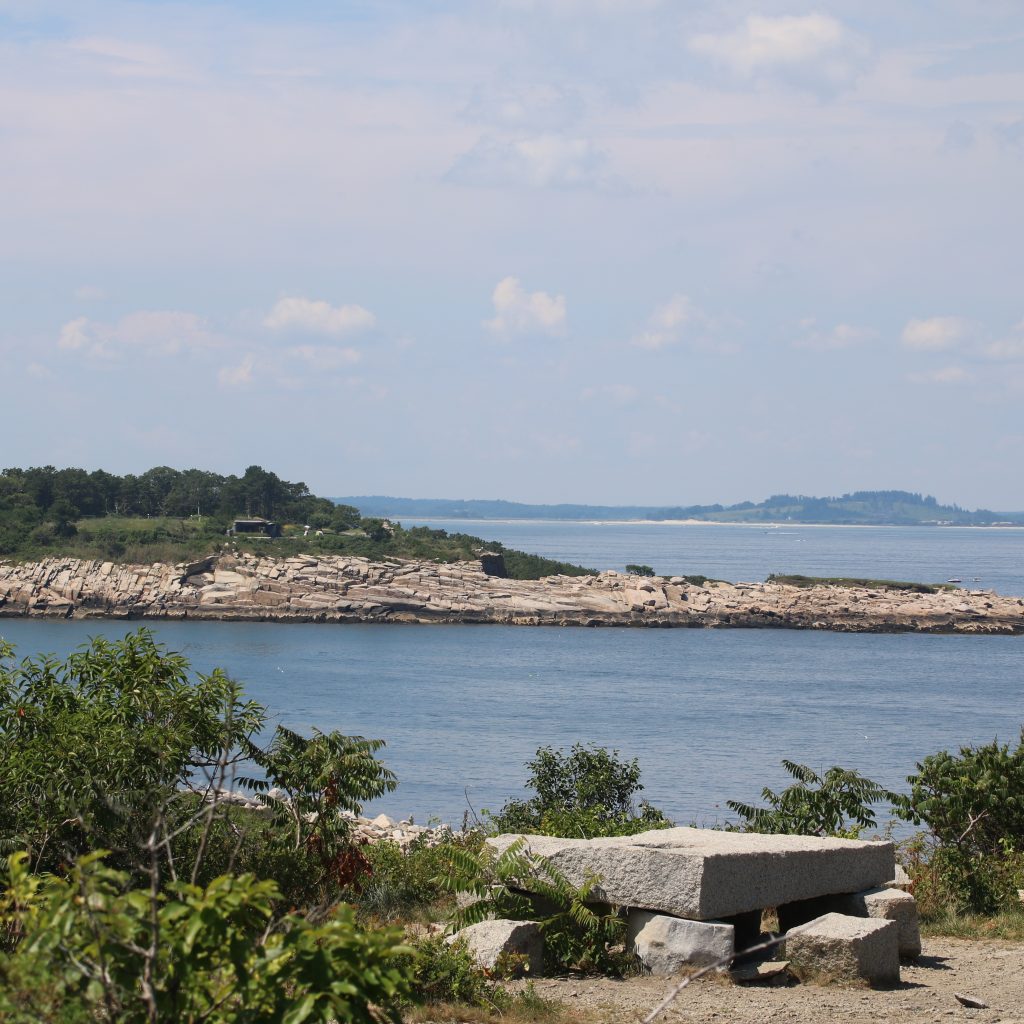






The point of marker 8 is to demonstrate the diameter size of the holes. When the quarrymen started using steam power drills, it became possible to cut deeper holes and quarry larger pieces of stone.

Granite bollards were set onshore or on wharves to secure the lines of the ships. Initially cut by hand, these pieces of granite were quite impressive in person.
After touring the quarry, we hiked down to the shoreline, which is part of Halibut Point Reservation. Here you can climb the rocks, play in tide pools, see marine life, and more. I love sitting there and listening to the crash of the waves.





On our way back to the car, we stopped to admire a few of the granite structures that scattered along the park.



Until next time Rockport. We will defintely be back.


